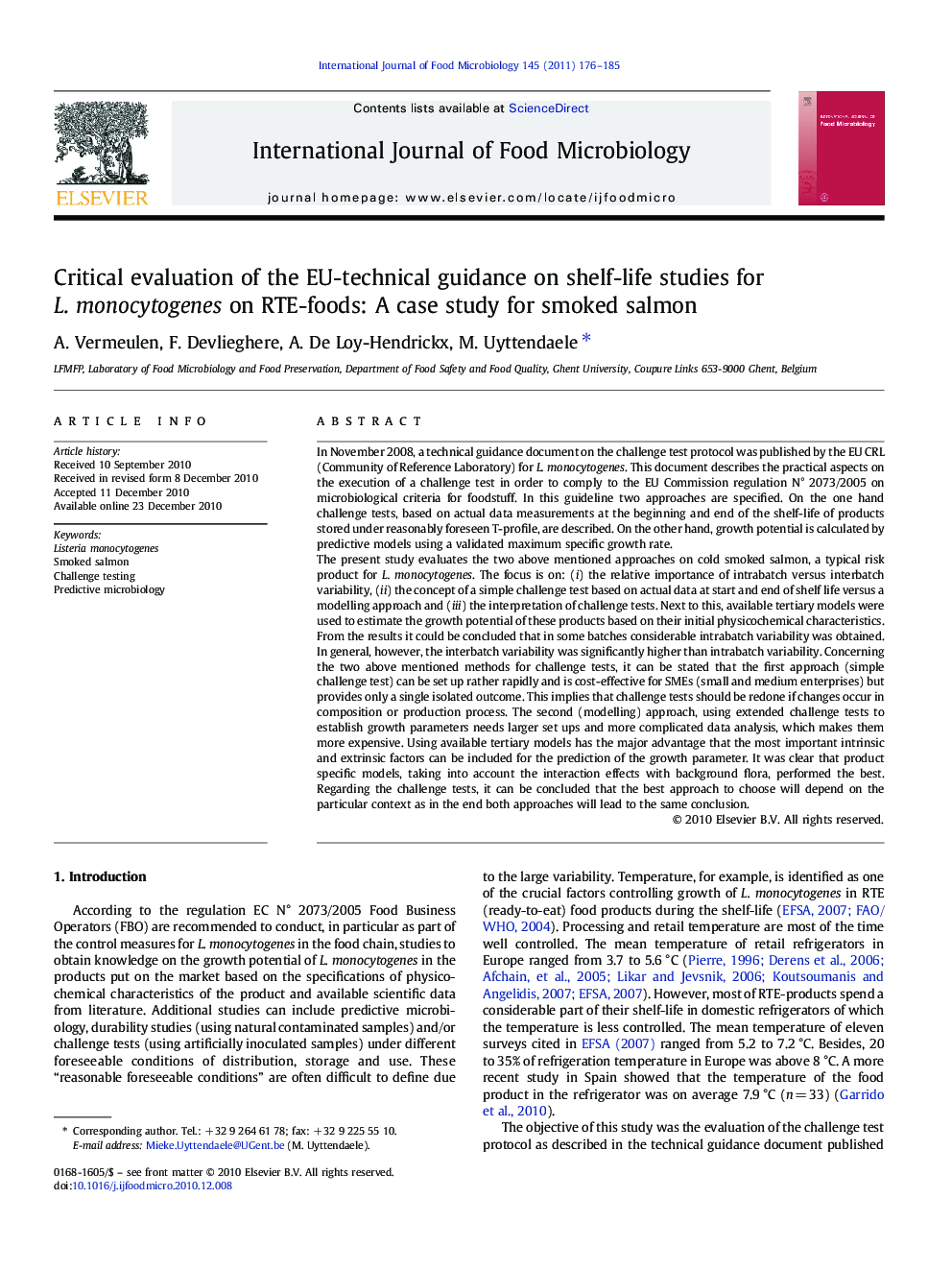| کد مقاله | کد نشریه | سال انتشار | مقاله انگلیسی | نسخه تمام متن |
|---|---|---|---|---|
| 4368741 | 1616674 | 2011 | 10 صفحه PDF | دانلود رایگان |

In November 2008, a technical guidance document on the challenge test protocol was published by the EU CRL (Community of Reference Laboratory) for L. monocytogenes. This document describes the practical aspects on the execution of a challenge test in order to comply to the EU Commission regulation N° 2073/2005 on microbiological criteria for foodstuff. In this guideline two approaches are specified. On the one hand challenge tests, based on actual data measurements at the beginning and end of the shelf-life of products stored under reasonably foreseen T-profile, are described. On the other hand, growth potential is calculated by predictive models using a validated maximum specific growth rate.The present study evaluates the two above mentioned approaches on cold smoked salmon, a typical risk product for L. monocytogenes. The focus is on: (i) the relative importance of intrabatch versus interbatch variability, (ii) the concept of a simple challenge test based on actual data at start and end of shelf life versus a modelling approach and (iii) the interpretation of challenge tests. Next to this, available tertiary models were used to estimate the growth potential of these products based on their initial physicochemical characteristics.From the results it could be concluded that in some batches considerable intrabatch variability was obtained. In general, however, the interbatch variability was significantly higher than intrabatch variability. Concerning the two above mentioned methods for challenge tests, it can be stated that the first approach (simple challenge test) can be set up rather rapidly and is cost-effective for SMEs (small and medium enterprises) but provides only a single isolated outcome. This implies that challenge tests should be redone if changes occur in composition or production process. The second (modelling) approach, using extended challenge tests to establish growth parameters needs larger set ups and more complicated data analysis, which makes them more expensive. Using available tertiary models has the major advantage that the most important intrinsic and extrinsic factors can be included for the prediction of the growth parameter. It was clear that product specific models, taking into account the interaction effects with background flora, performed the best. Regarding the challenge tests, it can be concluded that the best approach to choose will depend on the particular context as in the end both approaches will lead to the same conclusion.
Research Highlights
► Evaluation of the EU CRL technical guidance document on challenge tests.
► Importance of testing on several replicates and batches.
► Choosing a simple versus modeling approach for challenge tests is context dependent.
► Safety factor in needed to transfer results of a challenge test into action limits.
Journal: International Journal of Food Microbiology - Volume 145, Issue 1, 31 January 2011, Pages 176–185